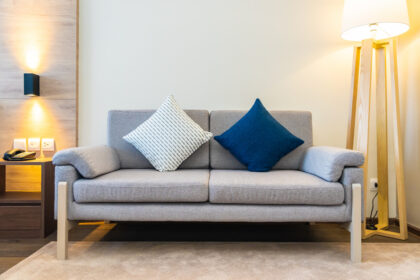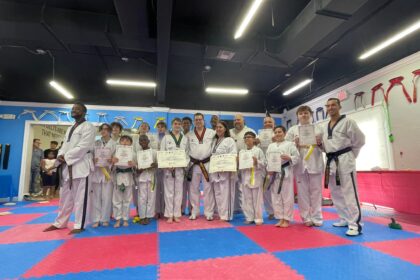In underground excavation projects, shotcrete mining stands as a critical component for ensuring rock stability and workforce safety. If you’re responsible for budgeting and planning in mining operations, you need to understand the real drivers behind the shotcrete price per m2. This article breaks down those factors in detail, giving you a clear picture of where your money goes and how to manage it efficiently.
Understanding Shotcrete in Mining Applications
Shotcrete mining involves spraying a mix of cement, aggregates, water, and sometimes additives or steel fibers onto rock surfaces. This process strengthens weak rock masses, prevents loose debris from falling, and forms a protective barrier that allows tunneling and excavation to continue safely.
You typically choose between two application methods:
- Wet-mix shotcrete: You mix all ingredients before pumping, which provides uniform quality and faster application.
- Dry-mix shotcrete: You feed dry ingredients through the nozzle and mix with water at the end. This method offers flexibility in smaller, harder-to-access sites but may result in more rebound and dust.
Major Factors Influencing shotcrete price per m2
1. Material Composition and Quantity
The materials used in your mix directly affect cost. Portland cement, aggregates, water-reducing agents, accelerators, and reinforcing fibers each contribute to the final price. For a standard wet-mix shotcrete:
- Cement content ranges from 350 to 450 kg/m³
- Admixtures like silica fume or fly ash cost more but improve strength and durability
- Steel or synthetic fibers for reinforcement increase cost by 15–30%
Depending on your mix design and thickness, your material cost can range from $80 to $120 per cubic meter, which typically translates to $20 to $40 per m² for a 50mm application.
2. Application Thickness
Thickness is one of the most significant drivers of cost. You apply shotcrete in layers of 25mm to 100mm depending on design requirements. Doubling the thickness nearly doubles your material and labor costs.
For example:
- 25mm thick layer: ~$15 to $25 per m²
- 50mm thick layer: ~$30 to $45 per m²
- 100mm thick layer: ~$60 to $90 per m²
If you’re reinforcing areas with severe spalling or seismic activity, you might need thicker layers, significantly increasing your shotcrete price per m2.
3. Type of Reinforcement
In high-risk areas, you may use fiber-reinforced shotcrete (FRS). While it enhances performance under dynamic loads, it also increases the cost. Steel fibers typically add $8 to $15 per m³, and synthetic fibers range from $5 to $12 per m³.
The addition of mesh or rebar, when required by design, adds further labor and material costs, making your per-square-meter cost rise sharply.
4. Equipment Requirements
You need to account for both purchase and maintenance of the spraying equipment. The type of pump, shotcrete robot, or hand nozzle setup used influences labor efficiency and application quality. You might choose from:
- Small trailer-mounted machines for narrow drifts
- Robotic spraying arms for large-scale mines
- Specialized mixers and pumps for high-volume operations
High-end equipment boosts production rates but requires capital investment and skilled operators. Daily rental costs for spraying systems can range from $800 to $1,500, which directly affects your per-m² cost if your work rate is low.
5. Labor Efficiency
Skilled operators are essential. Experienced nozzlemen reduce material rebound, improve consistency, and lower rework costs. Labor costs typically account for 20–30% of the total shotcrete mining budget.
If your crew sprays 40 m²/hour and earns $40/hour, the labor cost is $1 per m². But if unskilled workers only cover 20 m²/hour with higher rebound, your labor cost doubles and material waste increases.
Training and productivity are key to managing this expense effectively.
6. Site Conditions
Each mining site presents different challenges. Factors that can increase cost include:
- Narrow tunnels or poor ventilation
- Water ingress or wet conditions
- Irregular rock profiles requiring complex spraying
- Remote locations with high transport costs
You might spend an extra 10–20% on logistics and access solutions in challenging environments. This cost gets passed on to your per-square-meter rate.
7. Shotcrete Rebound and Waste
Rebound is the material that bounces off the wall and doesn’t stick. Poor technique and dry-mix application can result in 20%–30% rebound, wasting material and labor.
Wet-mix applications reduce rebound to under 10%, helping you control costs. Managing rebound effectively can save you $5 to $10 per m² in material loss.
Estimating Your shotcrete price per m2
Let’s say you want to estimate the cost for a 50mm wet-mix shotcrete application in a moderate-access tunnel. Here’s a basic breakdown:
- Materials: $35/m²
- Labor: $8/m²
- Equipment: $5/m²
- Rebound waste: $2/m²
- Overhead and profit: $5/m²
Total estimated cost: $55 per m²
In harsher conditions or thicker applications, that number can rise to $70–$90 per m². By fine-tuning your mix design, optimizing labor output, and using efficient equipment, you can keep your costs under control.
Frequently Asked Questions (FAQs)
1. What is the average shotcrete price per m2 for mining projects?
Typical costs range from $40 to $90 per m² depending on thickness, location, materials, and labor. Thinner layers in accessible areas cost less, while complex or deep operations cost more.
2. What type of shotcrete is most cost-effective?
Wet-mix shotcrete is generally more efficient and less wasteful. It reduces rebound and labor hours, making it more cost-effective for large-scale mining.
3. Can I reduce shotcrete costs without compromising safety?
Yes. You can reduce costs by optimizing mix design, using quality equipment, improving crew productivity, and selecting proper application methods for your geology.
4. Why does shotcrete cost vary by site?
Site-specific conditions like rock hardness, tunnel geometry, water presence, and accessibility affect the amount of labor, materials, and time required—directly impacting cost.
5. How much rebound should I expect in shotcrete mining?
With proper wet-mix techniques and skilled nozzlemen, rebound can stay under 10%. In dry-mix applications or with poor technique, rebound may exceed 20%, increasing waste and cost.
Summary
If you’re managing or budgeting for shotcrete mining, you need a clear understanding of the cost structure. The shotcrete price per m2 depends on multiple variables—material choices, thickness, reinforcement, equipment, labor, and site conditions. By identifying these cost drivers and improving efficiency across your operation, you can maintain safety and performance without overspending.
Efficient planning, skilled personnel, and the right technology will help you control your shotcrete costs and keep your mining operations on track.





